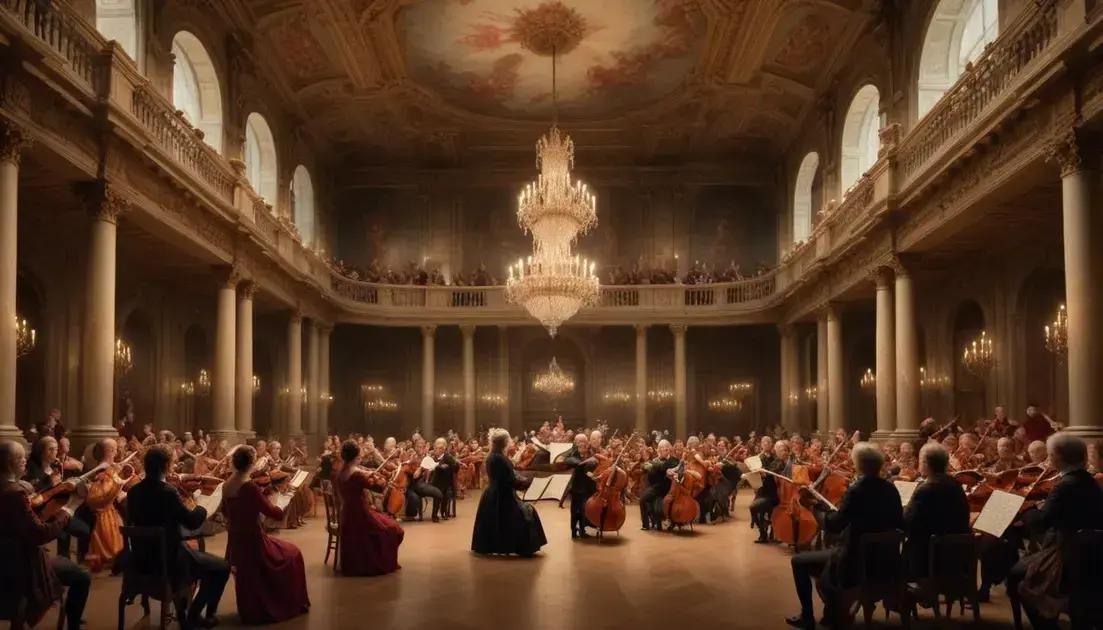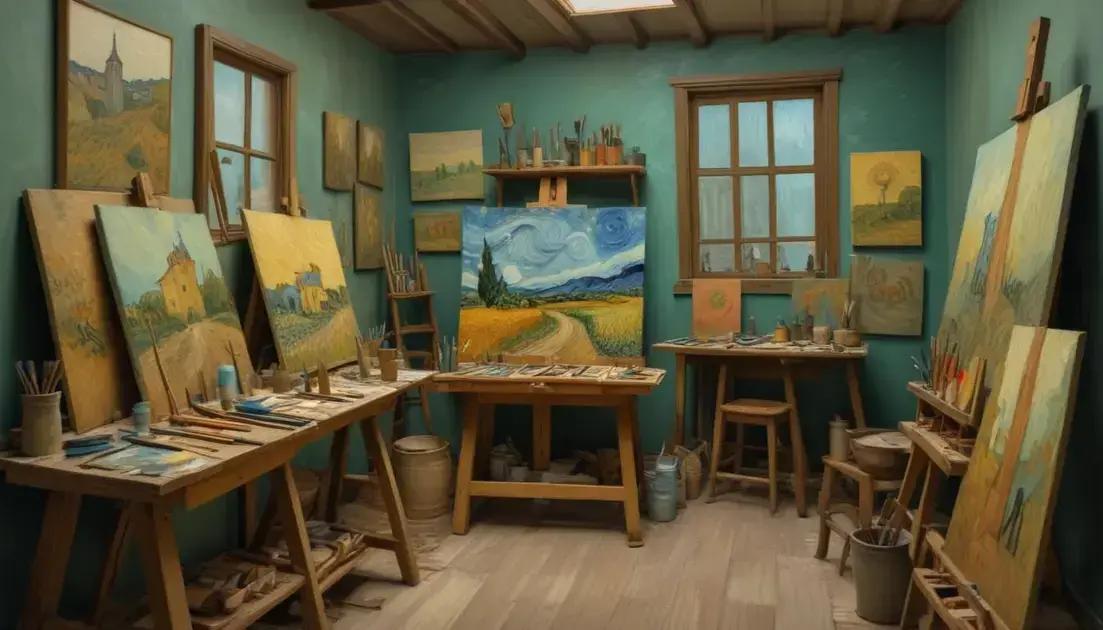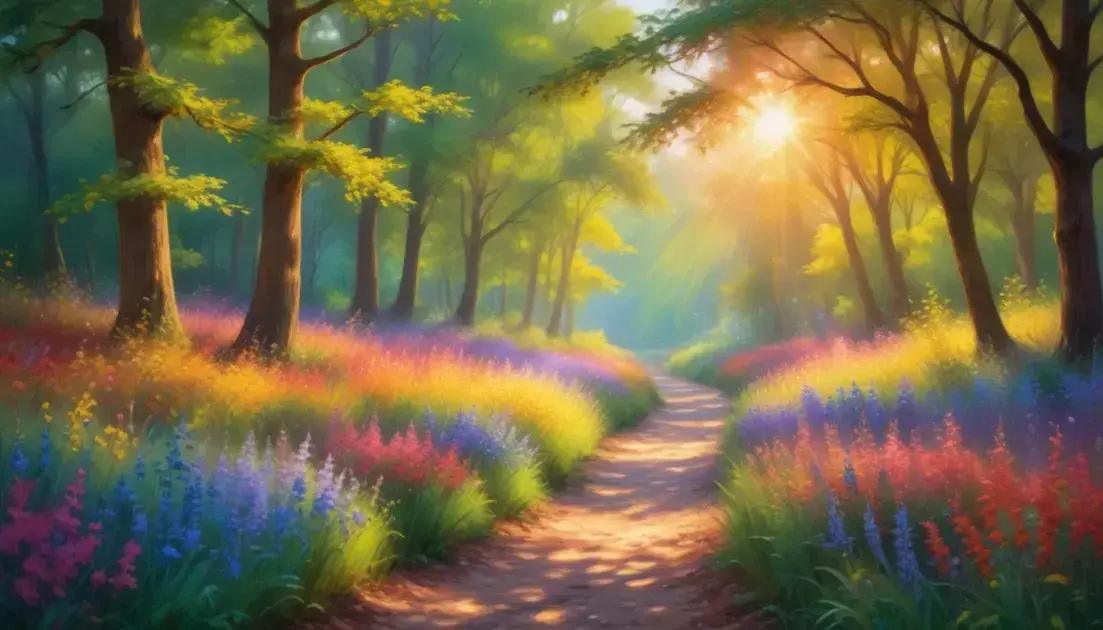
Baroque Music: The Sonic Splendor of Faith and Court
Baroque Music is characterized by its emotional depth, innovative use of instruments, and complex melodies, significantly influencing future composers. Key figures like Bach, Vivaldi, and Händel created masterpieces that showcase dramatic expressions and structured forms, leaving a lasting legacy that resonates in modern music. Works like Vivaldi’s The Four Seasons and Bach’s Brandenburg Concertos highlight the creativity and richness of this era.
Baroque Music represents a fascinating journey into the heart of 17th and 18th century artistry. Have you ever wondered how music can mirror the grandeur of faith and the sophistication of court life?
The Rise of Baroque Music
The rise of Baroque Music began in the late 1600s. It marked a time when music changed dramatically. Composers wanted to express deep emotions. They used new styles and techniques to achieve this. Music became more complex but also more beautiful.
Influence of the Time Period
During this period, society was transforming. Kings and queens supported the arts. Wealthy patrons funded compositions. This helped musicians thrive. The orchestra grew in size, which added richness to the sound. Instrumental music became just as important as vocal music.
Notable Composers
Key figures emerged who shaped Baroque Music. Johann Sebastian Bach was a master of counterpoint. His works are filled with intricate melodies. Antonio Vivaldi is famous for energetic concertos, especially The Four Seasons. George Frideric Händel brought grand opera to life with his dramatic compositions.
Musical Innovations
Baroque composers introduced new forms. The concerto and sonata became popular. They also focused on harmony and the use of dynamics. Musicians played with emotions, creating thrilling climaxes and gentle resolutions. This was a real shift from earlier styles.
Key Characteristics of Baroque Composers
Baroque composers had unique styles that really set them apart. They focused on expressing emotion through their music. This emotion was often dramatic and intense. Their use of dynamics created contrast, which made the music exciting.
Innovative Use of Instruments
Instruments played a key role in Baroque music. Composers used strings, brass, woodwinds, and percussion to create rich sounds. They experimented with different combinations of these instruments. This gave the music a fuller, more vibrant character.
Melody and Harmony
The melodies were often elaborate and ornamental. Composers liked to add trills and runs to make them sparkle. Harmony was also important, with many composers focusing on complex chords. This layered sound made the music feel alive.
Form and Structure
Typical forms from this time included the concerto, the sonata, and the opera. These structures helped organize the music in creative ways. Composers often added instrumental sections called ritornello to themes, returning to familiar ideas throughout the piece.
Overall, Baroque composers made music that was rich in emotion and creativity. Their innovative approach influenced many generations of musicians to come.
Influence of Baroque Music on Future Generations
The influence of Baroque Music on future generations is significant. Many of today’s composers draw inspiration from this era. Baroque styles made their way into later music genres, like classical and modern.
Musical Techniques
Composers still use the techniques developed during the Baroque period. The use of counterpoint and intricate melodies can be seen in modern compositions. These techniques help create depth and texture in music.
Emotional Expression
Baroque Music emphasized emotional expression. This idea continues to resonate. Musicians today aim to evoke feelings through their work. They use dynamics and harmonies to connect with listeners.
Baroque Revival
In the 20th century, there was a Baroque revival. Many musicians and composers looked back to this rich period. They performed and reinterpreted Baroque pieces, making them accessible to modern audiences.
The impact of Baroque Music is seen in various genres beyond classical. Pop and film music often incorporate Baroque elements, showing its lasting legacy.
Exploration of Notable Baroque Works
Exploring notable Baroque works reveals the creativity of this musical era. Composers crafted pieces that are still celebrated today. Each work reflects their unique style and emotional depth.
Johann Sebastian Bach
Bach’s compositions are masterpieces of Baroque music. His Brandenburg Concertos showcase lively rhythms and intricate melodies. The Goldberg Variations highlight his genius in developing themes.
Antonio Vivaldi
Vivaldi is famous for his work, The Four Seasons. This set of violin concertos captures the essence of each season. The music is energetic and full of vivid imagery.
George Frideric Händel
Händel’s Messiah remains one of the most performed choral works. Its powerful arias and choruses inspire audiences worldwide. The music blends drama with spiritual themes.
Baroque music is rich and diverse. Each notable work brings a new experience. These pieces still resonate with modern listeners, proving their lasting impact.
Conclusion
In conclusion, exploring the world of Baroque Music reveals its beauty and impact. From Bach’s complex compositions to Vivaldi’s vivid concertos, these works still inspire today. Händel’s powerful Messiah continues to touch hearts around the world.
The legacy of Baroque composers is clear. Their techniques and emotional depth influenced many future generations. By studying these notable works, we appreciate the art and creativity of this rich musical period. Baroque music is more than history; it’s a living part of our cultural heritage.


